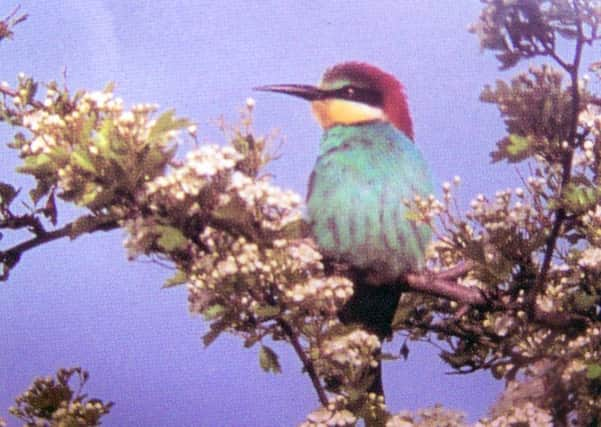Colourful little celestial beings on our shores


He is well known to birding circles today as being the first Sussex person to record a rare bird – the bee-eater – in the county.
With his gun. He shot one on May 6, 1829.
No doubt the wretched bird was lost and way out of its comfort zone which was Spain, in summer, and Africa in winter.
Advertisement
Hide AdAdvertisement
Hide AdThen in 1833 another bee-eater was found dead on the shore at or near Worthing.
More singles followed over the early part of Queen Victoria’s reign and were set up as valuable specimens retained in the Dyke Road Museum, Brighton, or sold as treasured ornaments.
But these were all visitors, apparently not breeding in our country until a pair attempted to in June 1920 near Edinburgh.
Now for the first time a pair has bred successfully this year on the Isle of Wight, rearing young. Too late even for the very latest volume of Atlas of British Birds which was published in 2012.
Advertisement
Hide AdAdvertisement
Hide AdI did not see them there, but at least enjoyed seeing these extraordinary birds in August this year in Portugal.
Around the town of Montzaraz in the Alentejan District near the Spanish border bee-eaters were perched like technicolour starlings along the many telephone wires.
Well, that’s a bad description, perhaps brightly coloured swallows, large humming birds, might give a better idea of what they resemble.
But even more than looks, how these birds behave is what attracts one.
Advertisement
Hide AdAdvertisement
Hide AdThey fly like little angels, those coloured ones painted and carved so delicately that one can see on the ceiling of Blythburgh Church in Suffolk.
Even Cromwell’s soldiers billeted in that church, practising musket fire on the ceilings and walls in the 1600s did not fire at these little angels.
When they fly over my son’s little small-holding in Portugal they are difficult to see against the brilliant sky, but they sing as a choir with liquid, throaty calls of great musical sound, truly as though they are some cosmic being from another sphere.
They sail along on flat, pointed wings, turning gracefully then shoot forward with sudden acceleration.
Advertisement
Hide AdAdvertisement
Hide AdThey are lovely to see, even more so than swifts or swallows, so we have something to look forward to in this country in the years ahead.
Other southern birds which are a delight to see here in recent times, breeding and rearing young, have been little egrets, breeding for the first time in 1996, cattle egrets in 2008, great white egrets in 2012, little bitterns and spoonbills both in 2008.
The next thing we shall have are cork oaks and olive groves as farm crops, together with rock partridges and imperial eagles.